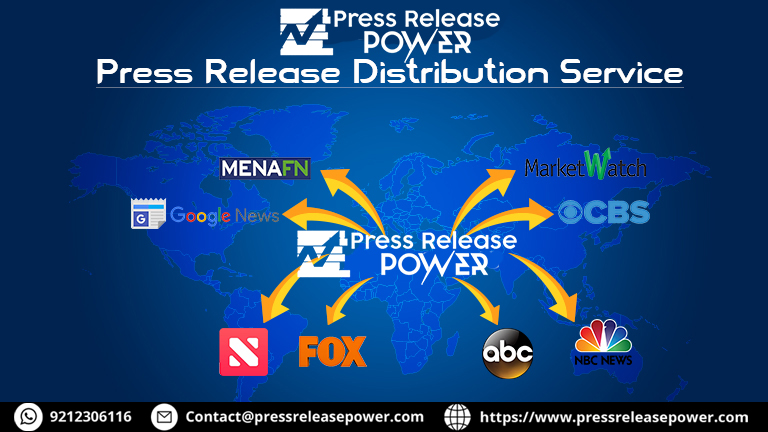In the world of digital marketing, on-page optimization plays a crucial role in achieving SEO success. High-quality content alone isn't enough; it must be optimized to align with search engine algorithms and user expectations. This guide provides a step-by-step approach to publishing content that is fully optimized for SEO, ensuring maximum visibility, engagement, and performance.
Understanding On-Page SEO Fundamentals
Definition and Importance of On-Page SEO
On-page SEO refers to the practice of optimizing individual web pages to rank higher and earn more relevant traffic in search engines. This includes optimizing both the content and HTML source code of a page.
Key Elements of On-Page Optimization
Key elements include keyword usage, content quality, meta tags, URL structure, internal linking, image optimization, and user experience signals such as page speed and mobile responsiveness.
How On-Page SEO Differs from Off-Page and Technical SEO
While on-page SEO focuses on elements within your control on your website, off-page SEO involves actions taken outside your site (like backlinks), and technical SEO refers to optimizing the backend structure of your site.
Keyword Research and Targeting
Identifying Relevant Keywords and Phrases
Effective on-page optimization starts with thorough keyword research. Identify keywords that are relevant to your niche and have a high search volume but low competition.
Using Keyword Research Tools
Tools like Google Keyword Planner, Ahrefs, and SEMrush help identify keyword opportunities by providing data on search volume, competition, and related terms.
Understanding Search Intent and User Intent
It’s vital to understand what users intend when they type certain queries. Search intent can be informational, navigational, commercial, or transactional. Matching content to intent improves relevance and engagement.
Choosing Focus Keywords and LSI Keywords
Select a primary keyword for each page and incorporate LSI (Latent Semantic Indexing) keywords, which are semantically related to the main keyword, to enhance content relevance and search visibility.
Crafting SEO-Optimized Content
Writing High-Quality, Engaging Content
Content must be valuable, informative, and engaging. It should address user pain points, answer questions, and provide actionable insights.
Ideal Content Length and Structure for SEO
Longer content generally ranks better because it is more comprehensive. Aim for a length that thoroughly covers the topic—typically between 1,500 and 2,500 words.
Utilizing Headings and Subheadings (H1, H2, H3 Tags) Effectively
Proper use of headings and subheadings not only improves readability but also signals to search engines about the content’s structure and hierarchy.
Keyword Placement and Density Best Practices
Place the primary keyword in the first 100 words, in headings, and naturally throughout the content. Avoid keyword stuffing; maintain a keyword density of around 1-2%.
Including LSI Keywords for Context and Relevance
Integrate LSI keywords naturally throughout the content to provide additional context and relevance, which helps search engines understand the breadth of the topic.
Optimizing Meta Tags and Descriptions
Importance of Title Tags and Best Practices
Title tags are one of the most important on-page SEO elements. They should be compelling, under 60 characters, and include the primary keyword.
Crafting Compelling Meta Descriptions to Improve Click-Through Rates
Meta descriptions, while not a direct ranking factor, influence click-through rates. Write concise, compelling descriptions that include the primary keyword and call to action.
Using Keywords in Meta Tags Without Stuffing
Ensure the primary keyword is naturally included in the title tag and meta description, avoiding overuse or irrelevant keyword stuffing.
Best Practices for URL Structure and Optimization
URLs should be concise, descriptive, and include the target keyword. Avoid lengthy URLs with unnecessary parameters or characters.
Enhancing Content Readability and User Experience
Importance of Readability and Content Flow
Content should be easy to read and understand. Use short sentences, clear language, and break content into manageable sections.
Utilizing Bullet Points, Lists, and Short Paragraphs
These elements enhance readability by breaking up text and making information easier to digest.
Incorporating Visual Elements (Images, Videos, Infographics)
Visuals not only make content more engaging but also help illustrate points and improve user retention. They should be relevant and high-quality.
Ensuring Mobile-Friendliness and Responsive Design
With a significant portion of web traffic coming from mobile devices, ensure content is mobile-friendly and the website is responsive.
Internal Linking Strategy
Role of Internal Links in SEO and User Navigation
Internal links help distribute page authority and guide users to related content, improving user experience and SEO.
Best Practices for Internal Linking
Link to relevant pages using descriptive anchor text. Avoid over-linking or using generic anchor text like "click here."
Using Anchor Text Effectively
Anchor text should be relevant to the linked page and provide context. It should include keywords but remain natural.
Creating a Logical Link Structure to Enhance Site Architecture
A well-planned internal linking structure helps search engines crawl and index pages effectively, enhancing overall SEO performance.
Optimizing Images and Multimedia
Importance of Optimizing Images for SEO
Optimized images improve page load speed and user experience. Use descriptive file names, alt text, and captions.
Best Practices for Image File Names, Alt Text, and Captions
Include relevant keywords in image file names and alt text to improve accessibility and search engine understanding.
Using Compressed Images to Improve Page Load Speed
Large images can slow down page speed, affecting SEO. Use compressed images to balance quality and loading times.
Embedding Videos and Multimedia Without Slowing Down the Page
Ensure that embedded multimedia does not significantly affect page load speed. Use optimized formats and consider lazy loading.
Implementing Structured Data and Schema Markup
What is Schema Markup and Its Importance for SEO
Schema markup is a form of microdata that helps search engines better understand content, enhancing visibility through rich snippets.
Types of Structured Data (e.g., FAQ, How-To, Product)
Implement structured data types relevant to your content to improve search visibility and click-through rates.
How to Implement Schema Markup for Enhanced Search Appearance
Use tools like Google’s Structured Data Markup Helper to generate schema and test it with Google’s Structured Data Testing Tool.
Using Tools like Google’s Structured Data Testing Tool
Regularly check schema implementation to ensure it is correct and provides the desired search enhancements.
Monitoring and Analyzing Content Performance
Key Metrics to Track for On-Page SEO
Monitor bounce rate, dwell time, organic traffic, and conversion rates to assess content performance.
Using SEO Tools to Monitor Content Performance
Tools like Google Analytics and SEMrush provide insights into content performance, helping to identify areas for improvement.
Regularly Updating and Refreshing Content Based on Analytics
Content should be regularly updated to stay relevant and improve SEO performance based on data insights.
Conducting SEO Audits to Identify and Fix On-Page Issues
SEO audits help identify technical and content issues that may affect rankings. Regular audits ensure consistent optimization.
Staying Updated with SEO Best Practices
Importance of Keeping Up with SEO Trends and Algorithm Changes
SEO is dynamic; staying updated with the latest trends and algorithm changes is crucial for maintaining rankings.
Regularly Reviewing and Adjusting On-Page Strategies
SEO strategies should be regularly reviewed and adjusted based on performance data and industry developments.
Leveraging Industry Resources and SEO Communities for Insights
Participate in SEO communities, webinars, and forums to stay informed about best practices and emerging trends.
Final Thought
On-page optimization is a continuous process that requires attention to detail and a deep understanding of SEO fundamentals. By implementing the strategies outlined in this guide, businesses can enhance their content’s visibility, engagement, and ranking potential. Start applying these on-page SEO best practices today to gain a competitive edge in the digital landscape.
FAQ
What is on-page optimization?
On-page optimization refers to the process of optimizing individual web pages to improve their search engine rankings. This involves optimizing various elements within the page, such as the title tag, meta description, headings, and content itself.
Why is on-page optimization important?
On-page optimization is crucial for improving your website's visibility in search engine results pages (SERPs). By optimizing your pages, you can make them more relevant to search queries, which can lead to higher rankings and increased organic traffic.
What are the key elements of on-page optimization?
Some of the key elements of on-page optimization include:
- Title tags: These are the titles that appear in search engine results. They should be concise, informative, and include relevant keywords.
- Meta descriptions: These are short summaries of your page that appear below the title in search results. They should be compelling and entice users to click through.
- Headings: Use headings (H1, H2, H3, etc.) to structure your content and make it easier to read. They should also include relevant keywords.
- Content: Create high-quality, informative content that is relevant to your target audience. Use keywords naturally throughout your content, but avoid keyword stuffing.
- Image optimization: Optimize your images with descriptive file names and alt text to improve accessibility and search engine visibility.
- URL structure: Use clear and concise URLs that include relevant keywords.
How can I optimize my content for SEO?
Here are some tips for optimizing your content for SEO:
- Keyword research: Identify relevant keywords that your target audience is searching for.
- Keyword placement: Use your target keywords naturally throughout your content, including in the title tag, meta description, headings, and body text.
- Content quality: Create high-quality, informative content that is valuable to your audience.
- Readability: Make your content easy to read by using clear and concise language, breaking up text with headings and subheadings, and using bullet points or numbered lists.
- Internal linking: Link to other relevant pages on your website to improve navigation and SEO.
How often should I update my content?
It's important to update your content regularly to keep it fresh and relevant. This can help improve your search engine rankings and user experience.
Can you provide some examples of on-page optimization best practices?
Here are some examples of on-page optimization best practices:
- Use a unique title tag for each page.
- Write compelling meta descriptions that entice users to click through.
- Use headings to structure your content and make it easier to read.
- Create high-quality, informative content that is valuable to your audience.
- Optimize your images with descriptive file names and alt text.
- Use clear and concise URLs that include relevant keywords.
- Link to other relevant pages on your website.
- Update your content regularly to keep it fresh and relevant.
By following these best practices, you can improve your website's search engine rankings and attract more organic traffic.
Get in Touch
Website – https://www.webinfomatrix.com
Mobile - +91 9212306116
WhatsApp – https://call.whatsapp.com/voice/9rqVJyqSNMhpdFkKPZGYKj
Skype – shalabh.mishra
Telegram – shalabhmishra
Email - info@webinfomatrix.com

.jpg)
.jpg)





 English (US) ·
English (US) ·